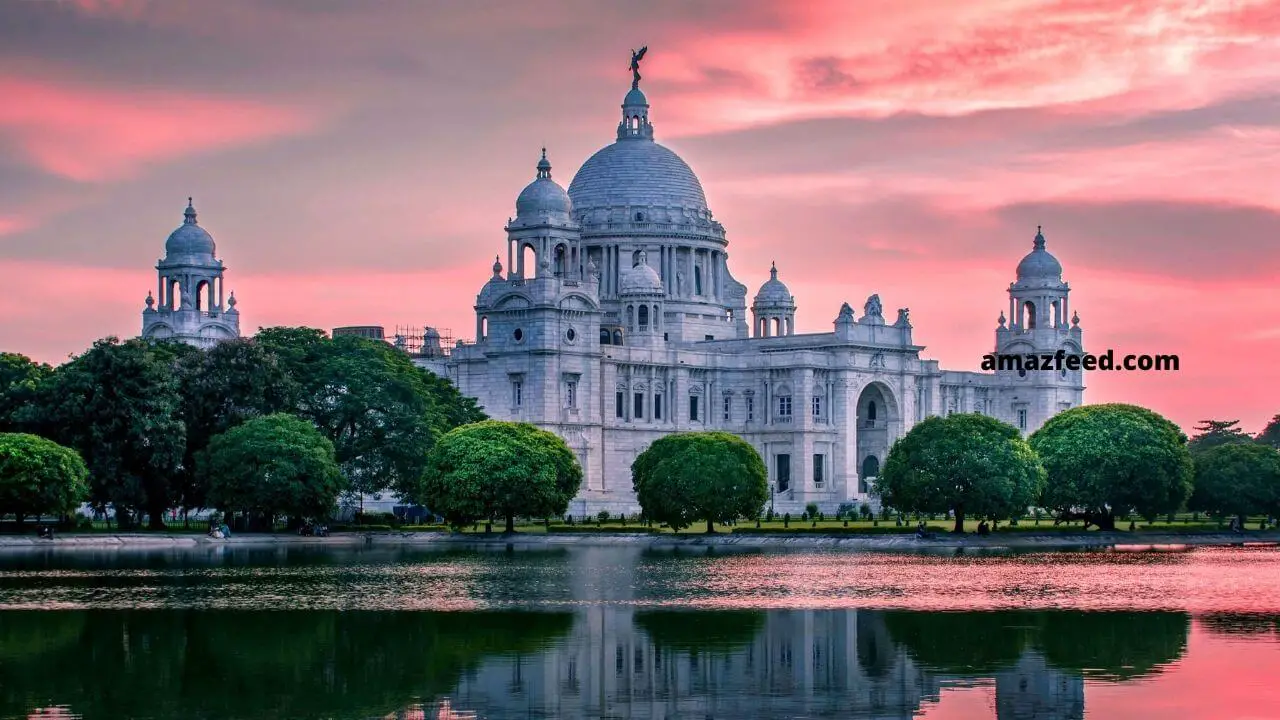February 15 2019 is the day when India ran its first-ever semi-high speed train on the tracks from the holy city Varanasi to the Indian capital Delhi. Indian Prime Minister Narendra Modi flagged the train on its first-ever journey from Delhi. To this date, the fastest train in the nation was the Shatabdi express. Breaking all limits this semi-high speed train outpaces Shatabdi express by 30 kilometers per hour, reducing the travel by 15%. This semi-high speed train glorifies the massive Indian railway network spread all over the country, which is also the wildly preferred transportation menace of the country. So get on board with me on this incredible journey of India’s first-ever semi-high speed train.
The initiative, taken by the Indian Government to manufacture high-speed trains
The initiative of making India’s first semi-high speed train, manufactured in an Indian rail factory, started with the Indian Government’s Make In India movement. On 25th September 2014 approximately six years ago India took its first step from becoming one of the largest markets to a global manufacturing and designing hub. This initiative prioritized a few aspects of Indian economical and social development:
- To attract global investors to invest in the Indian market.
- To decrease the rate of importing and increasing the rate of exporting.
- To create more job opportunities for the folks.
- To increase the GDP with more contribution from the manufacturing sector.
To get started the focus was to catch up with the world level technology in different sectors in India. Among them, one was the Indian railways. Railways are the wildly popular transit method in India, with it’s overpopulated, cheap in price, and with a network connecting not only the metro cities or towns but also some very remote rural villages. The current scenario could highly use semi-high speed trains. The Indian Government knew it very well, so while coming up with its very first high-speed train – Train 18, they kept three things in mind. One is to shorten the travel time, upgrade the trains with modern amenities, but keep the ticket fare reasonable.
“Vande Bharat Express” the first of its kind
The Integral Coach Factory in Preambur, Chennai, in the state of Tamilnadu, operated by Indian railways, and the Indian Government made the first-ever semi-high speed train Vande Bharat Express. Vande Bharat Express or Train 18 got on the tracks after 18 months. Yes, that’s correct it took only 18 months for India to manufacture their fastest train ever. The train is not only cost-effective but also energy efficient. The Vande Bharat Express is approximately 40% cheaper than the similar trains imported from England. The cost of the first rake they estimated as rupees 1 billion (UD$ 14 million). But the price goes down with subsequent production of similar rakes. Here are the design and development traits of this semi-high speed train:
- It has 16 passenger cars with a seating capacity of 1128 passengers.
- There are two different types of coaches in there – ac chair car and executive chair car. Two center compartments are executive compartments with a seating capacity of 52 persons each, and the rest of it is ac chair car with a seating capacity of 78 each.
- The train has an onboard catering facility, serving delicious foods and beverages.
- Doors are automatic, sensor-based, and with sliding footsteps.
- It has an overhead baggage space.
- There are CCTV cameras all over the train.
- It gives utmost priority to the safety of the passengers, it has fully sealed gangways.
- It also has an odor control system and smoke alarm.
- The water taps are sensor-based.
- Most importantly, it has no engine. Yes, you read it right. It is the first made in India train that will run without any engine as it is self-propelled. It is India’s first shift towards the technology shift in railways.
So, how will Vande Bharat Express run without an engine?
To narrow it down with simple words the train is like metro trains or the EMUs that run in the suburban cities or intercity networks, without a locomotive dragging them.
The train has a driver coach at both ends. So that while reaching the destination, they don’t need to reverse the train. This also ensures less operating time.
The technical difficulties in Train 18 are much difficult than the trains currently running in India as it has the capability of running at 180 Kmph. If you compare the coaches of Vande Bharat Express to a conventional LHB coach that is gateman express, the power distribution for the lights and air conditioning is controlled and distribute from the locomotive of the train. But Train 18 coaches are specially designed to have their power generating system below the chassis of the coaches. Unlike having a separate power generating car, the coaches are their power generator. It makes the design of the coaches very complex and one of its kind. ICF also had to make different electrical types of equipment for Train 18.
In an interview with the financial express, the ICF official said, “In Train 18, every alternate coach will be powered /motorized. It will be called a motor coach. Each motor coach will have four 3-phase traction motors of rating 250 kw, approximately making the total rating of the motor coach – 1000 KW ( 1340 HP).”
What makes Vande Bharat Express a premium/luxurious train?
1. the exteriors
The exteriors of the train are similar to modular European trains. The train has a white body, made with an aerodynamic design that narrows down at each end. It is due to the high speed of the train. While running at 160 Kmph, the air pressures it too high. A flat surface will have to bear a tremendous amount of air pressure. But the pointy end reduces the air pressure at the front end of the train that may also lead to potential damage to the frontal windows. The aerodynamic design also helps the air to pass by smoothly while running at such a high speed.
The train has continuous windows giving a full panoramic feel. The windows are bigger than the conventional ac coaches of Indian railways. Also, the glass is one-way glass that comforts the passengers as they can see outside from the train, but no one can peep through the windows looking back at them.
2. The Interiors
Train 18 interiors are very upgraded than any other train of India, even the Rajdhani express. The executive class has a two by two seating arrangement. The chairs are very comfy with push back options. It has good leg space that comes with a footrest stand. Train 18 have coaches well lit and fully air-conditioned. There are touch lights above every seat and an individual desk for each passenger. A water bottle holding space, a magazine holder, and charging ports are also there. In the executive class, the seats are revolving up to 180 degrees.
3. Delicious Food
Their onboard catering facility is another stepping stone set by Indian railways that do not compromise on the food quality. As an Indian, we have always face issues regarding the food quality of basic express and mail trains. The onboard pantry cars generally serve tasteless food for such a high price that passengers often get disappointed. Hygiene maintenance is also very low. But Vande Bharat Express makes your journey seamless from every aspect.
Onboarding the train at first you get a 1 l packaged drinking water. Then they will serve you tea and biscuits to munch on. For your breakfast, there is milk and cornflakes. But that’s not all next up is lassi, omelet, culet, boiled vegetables, brown bread, muffin, curd, and butter. You just have to make your sandwich.
For lunch, you get a full Indian lunch with rice, roti, dal, vegetables, chicken or paneer (depending on your choice), ice crème, and dessert.
The entire meal price includes in your ticket fare, and you get to choose from either veg or non-veg meal plan. The above-mentioned foods are from a specific journey, so these may subject to change.
4. Ultimate Comfort
In the above-mentioned points, it is clear Train 18 is all about the passenger’s comfort and value for money. The train experience gives a seamless journey. In the joining of each compartment, the joints are free from jerking. You have a seamless transition from one coach to another. Not like the metros or conventional trains where you generally tend to tip off your toes on the joining of coaches. The bathroom of Train 18 is water-free. It has vacuum flush just like aircraft. The water taps come with sensors to reduce the wastage of water. Each compartment has its dustbin.
So overall, Train 18 or Vande Bharat Express will give you an ultimate experience of luxury and comfort. If all of this entices you to plan a journey on this train then don’t worry. Here is everything that you will need to know before planning your journey:
5. How many Vande Bharat Express trains are there?
Currently, there are two Vande Bharat Express trains running. At first, there was only one train running from Varanasi to Delhi with only two stoppages in between – Kanpur and Allahabad. The second Vande Bharat Express runs from Delhi to Katra, and it first ran on 5th October 2019.
Anyhow Indian Government announced a tender for 44 Vande Bharat Express trains in their official website ireps.gov.in. It is a two-staged reversed auction-based tender, and the minimum local content percentage should be more than 75 percent at least. We can expect more Vande Bharat Express, running on the tracks soon.
6. What is the train schedule for Vande Bharat Express?
The Delhi to Varanasi Train 18 runs five days a week except for Mondays and Thursdays. The train number is 02436 (New Delhi – Varanasi) and 02435 (Varanasi to New Delhi). It departs at 6 am from New Delhi junction and reaches Varanasi at 2 pm, the same day, and on return, it leaves Varanasi at 3 pm and reaches New Delhi at 3 pm.
The Vande Bharat train schedule for New Delhi – Katra is very similar to the former one. The New Delhi – Katra Train 18 (22439) departs from Delhi at 6 am and reaches Katra at 2 pm. The return train, Katra – New Delhi (22440), departs from Katra at 3 am and reaches New Delhi at 11 pm. The only difference in both the train is the later one runs six days a week (except Tuesday) instead of five days.
7. What is the route map of Vande Bharat Express?
The route map of Vande Bharat Express is very particular. The New Delhi – Varanasi Train 18 has only two stoppages each for 2 minutes only at Kanpur central ad Allahabad. Whereas, the New Delhi – Katra Train 18 has a total of three stoppages – Ambala Cantt, Ludhiana, and Jammu Tawi, again with a stoppage-time of two minutes each.
Time table/running status for Vande Bharat Express New Delhi to Varanasi:
| stoppage | arrival | departure |
| New Delhi | – | 6:00 am |
| Kanpur central | 10:18 am | 10:20 am |
| Allahabad | 12:23 pm | 12:25 pm |
| Varanasi | 2:00 pm | – |
Time table/running status for Vande Bharat Express Varanasi to New Delhi:
| stoppage | arrival | departure |
| Varanasi | 3:00 pm | |
| Allahabad | 4:35 pm | 4:37 pm |
| Kanpur central | 6:30 pm | 6:32 pm |
| New Delhi | 11:00 pm | – |
Time table/running status for Vande Bharat Express New Delhi to Katra:
| stoppage | arrival | departure |
| New Delhi | – | 6:00 am |
| Ambala cantt | 8:08 am | 8:10 am |
| ludhiana | 9:19 am | 9:21 am |
| Jammu tawi | 12:38 am | 12:40 am |
| Katra | 2:00 pm | – |
Time table/running status for Vande Bharat Express Katra to New Delhi:
| stoppage | arrival | departure |
| Katra | – | 3:00 pm |
| Jammu Tawi | 04:13 pm | 04:15 pm |
| Ludhiana | 07:32 pm | 07:34 pm |
| Ambala Cantt | 08:48 pm | 08:50 pm |
| New Delhi | 11:00 pm | – |
What is the ticket fare of the Vande Bharat Express train?
The Vande Bharat Express Delhi to Katra train ticket price for ac chair car is rs.1630, and for executive chair car, the ticket price is rs.3015.
The ticket price for Vande Bharat Express Delhi to Varanasi train for ac chair car is rs.1570, and for executive chair car is rs.2965.
How fast Vande Bharat Express is?
The Vande Bharat Express train’s maximum speed is 180 Kmph, but due to the limitation of tracks and the safety of the passengers, the train has an average speed of 90 Kmph, with a top speed of 130 Kmph.
The distance between Delhi to Katra is 655 kilometers, and Delhi to Varanasi is 745 km Train 18 covers this distance in 8 hours.
Why is Vande Bharat called Train 18?
It took 18 months for ICF to complete the manufacturing of Vande Bharat express that is why formerly, they called it Train 18.
What is the route of the Vande Bharat train?
Vande Bharat Express runs from New Delhi to Varanasi, with stoppages at Kanpur central and Allahabad and New Delhi to Katra, with stoppages at Ambala Cantt, Ludhiana, and Jammu Tawi.
Is Vande Bharat the fastest train in India?
Vande Bharat Express is the fastest train in India, with a running speed of 13 Kmph.
What is the top speed of Vande Bharat Express?
The top speed of Vande Bharat Express is180 Kmph.
What is the average speed of Vande Bharat Express?
The average speed of Vande Bharat Express is 90 Kmph.
Is Vande Bharat a private train?
No, Vande Bharat Express is not a private train. It is under the Indian railways.
Does Vande Bharat have WIFI?
Yes, Vande Bharat Express has full WIFI coverage.
Is food served in Vande Bharat Express?
Yes, Vande Bharat Express servers full meals and snacks for free. They include the price of food in the ticket fare. You can choose from the veg or non-veg meal plan.
What is the ticket price of Vande Bharat Express?
The minimum ticket price for Vande Bharat Express is rs.1570, and the maximum is rs.2965 for Delhi to Varanasi Train 18. For Delhi, to Katra Train 18 the minimum ticket price is rs.1630 ad the maximum is rs.3015.
Is Vande Bharat Express running?
Due to the covid-19 pandemic, all the trains got suspended, as well as Vande Bharat Express. They decided to resume their service after a gap of 170 days again in October. But due to the coronavirus outbreak, the train remains canceled.
Which train is very fast in India?
The Vande Bharat Express or Train 18 is the fastest train in India, with a maximum speed of 180 Kmph. But due to passenger safety and limitation of tracks the trains run with 130 Kmph top speed.
What happened to Vande Bharat Express?
Due to the current outbreak of the coronavirus, Vande Bharat Express got canceled. But it will run back at the tracks as soon s possible. After 170 days, when the service of Train 18 resumed, only 2% of its total capacity got booked.
Is Train 18 a failure?
After rectifying the minor issues of Train 18 the Indian railways decide to manufacture 40 more Vande Bharat Express. There are only 3% of Indian railway tracks that fit the criteria to run a semi-high speed train on them. So to run more of such kind of train India needs to upgrade their tracks to a huge extent.
Will there be sleeper coaches in Vande Bharat Express?
The Indian railway is going to launch train 19, which will have sleeper coaches. By 2022 they are also planning on train 20, which will replace the Rajdhani Express.











